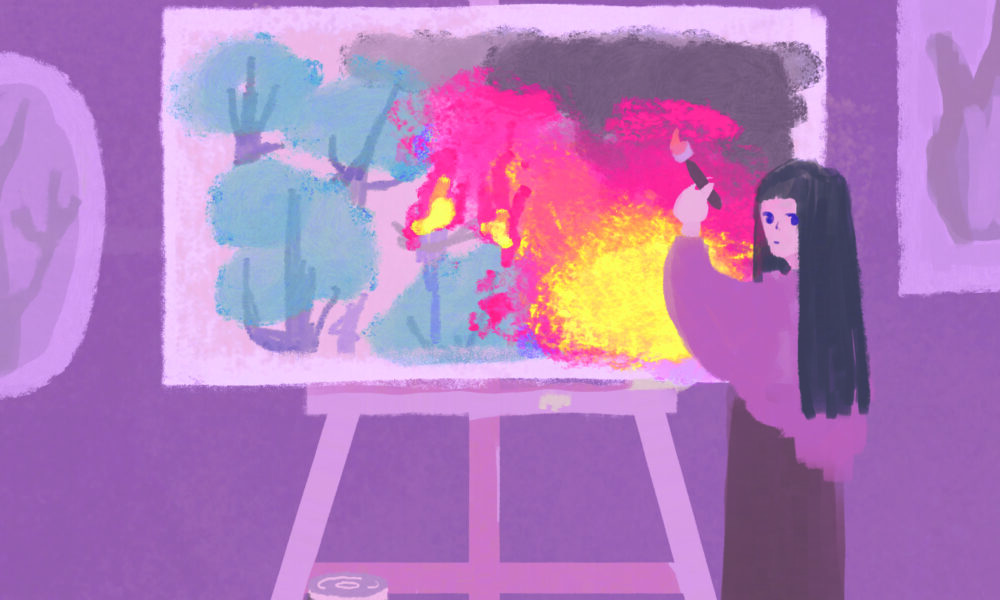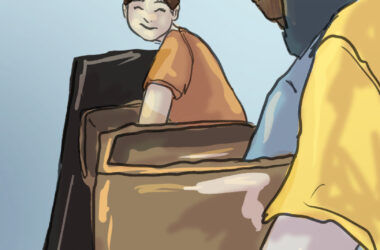Eleven thousand seven hundred years ago, Earth exited the last major geological epoch—the Ice Age—entering a period of relative warmth and stability, called the Holocene. Researchers, however, believe that the planet is ready for a new term: The ‘Anthropocene,’ denoting a time during which humans drive substantial change to our environment.
A recent article, written by a team including Elena Bennett, professor in McGill’s Department of Agricultural and Environmental Sciences, and Steven Cork, adjunct professor in Australian National University’s School of Public Policy, explores the challenges that humanity faces as it tries to solve this new epoch’s problems. The Anthropocene is used to describe how humans are almost single-handedly responsible for inducing an environmental global shift. To counteract this widescale destruction, the researchers propose that imagination is a hopeful yet complicated tool for creating a positive environmental future.
“Humans are a dominant force on the planet and drive many planetary forces,” Bennett said in an interview with The Tribune.
This enormous human impact represents what Bennett called a “complex footprint” with challenges including climate change, resource scarcity, declining food quality, and overpopulation.
These challenges have defined the last decade and will continue to worsen. While researchers across the globe realize this, many take a technological or political approach, developing novel machinery or approaches to public policy. Alternatively, Cork and Bennett’s research takes a cultural and psychological perspective, asking difficult questions about how we imagine ourselves and our species in relation to the environment, and to the future of the planet.
According to Cork, our worldviews are stopping us from the kind of critical action that the climate crisis requires.
“The first [problem] is that many people don’t understand the situation we’re in as a species,” Cork explained.
He continued that if you ask a person about what they believe the future looks like, their answer is based on their “simple models” of the world—the easiest way they understand the world. For many, the complex relationship between humans and the environment seems too difficult to grasp.
“This lack of understanding is partly because most people don’t understand the complexities of the challenges that have arisen,” Cork said.
Without fully understanding, it is impossible to mobilize a society to prepare for the future.
“The second aspect of how humans think that we focus on in our review is our limited ability to imagine,” Cork expanded.
Ask anyone born over fifty years ago if they expected to live in the world of today, and it is likely that they never envisioned one in which artificial intelligence could diagnose illnesses, or 3D printers could generate three-dimensional objects. Cork described this as “black swan” thinking, a reference to Nassim Taleb’s book Black Swan. In the book, all swans were white and the concept of a black swan seemed impossible. People could not comprehend something they had not seen before. Cork related this to our inability to anticipate the future.
While creating a plan for the future may be difficult, Cork and Bennett argue humans must instigate change for a better relationship with our planet, requiring new ways of relating to one another and imagining.
“We must think radically yet realistically about the future and stimulate their imagination about possible futures,” Cork elaborated.
To work toward this goal, Bennett described three significant steps to start reimagining the future. The first is to “inspire people,” by opening up conversations about what we want and need to achieve for a positive future. The second is to “encourage a plurality of different visions” that account for the ways that humans synthesize their profoundly nuanced views of a new world. The last goal is to scenario-build by exploring various potential futures to examine which would be most successful.
This is no easy task, but Cork, Bennett, and their team are working hard to show what needs to be done. A good place to start, as Bennett says, is to ask ourselves what are the places we can imagine ourselves in and look for our positive goals.






